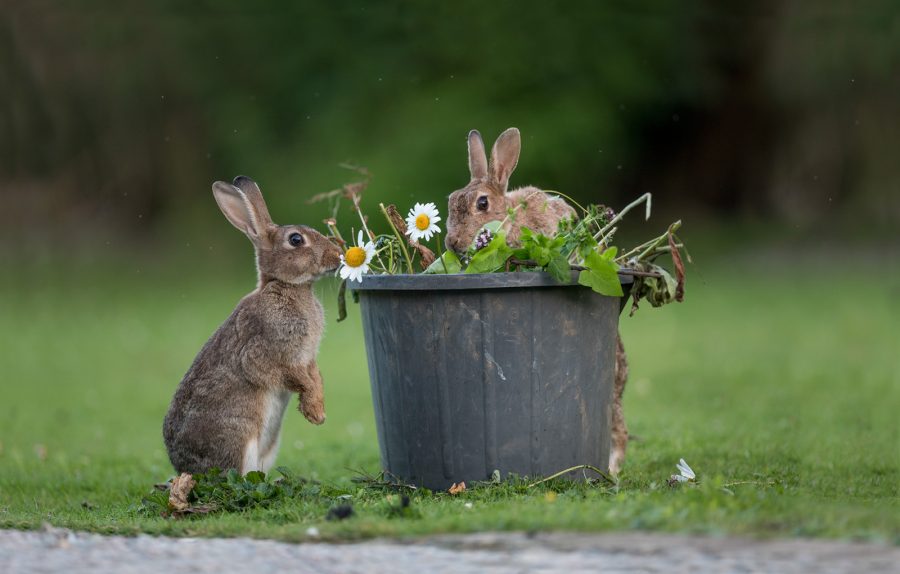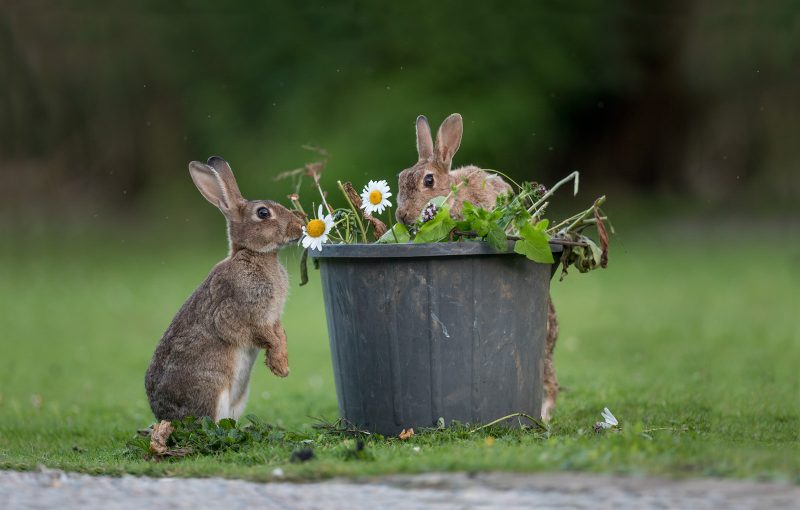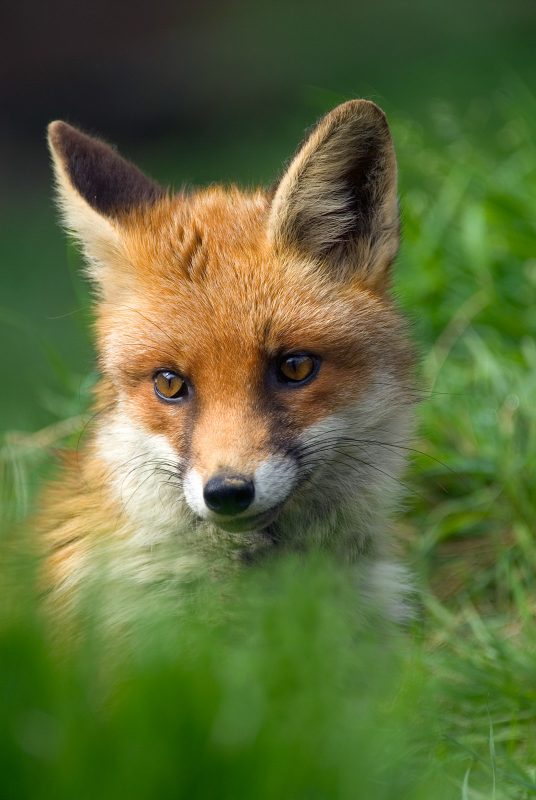How to Attract Mammals to Your Garden for Photography

When compared to birds, and even more so insects, we must appreciate that we have far fewer mammal species in the UK. Given that most of us will have gardens that are inaccessible to many of the larger, more wary families such as deer, we reduce the target audience further still.
Mammals are also more sedentary. With the exception of bats, they don’t fly so most mammals need to get access to our gardens on foot and the scope for mammals to ‘migrate’ to new areas is much more limited. Having said that, we do see successful species increasing their range and there is a form of migration amongst some bat species – and even some land-bound mammals such as the water shrew. So, in mammals we don’t see the scale of seasonal migration that we see in birds, but we do see seasonal changes in behaviour with a few mammals, including all bats, dormice and hedgehogs undergoing proper hibernation – and many others becoming less visible and active in winter.


Geography plays a big part in dictating the mammals that we might see in our gardens, too. If you live in the Highlands of Scotland you might expect to see pine marten and red squirrel in your garden, but if you live in London the only red mammals you will see are foxes. The squirrels will most definitely be grey.
More from the series:
General gardening advice
Mammal species are highly evolved and have specific needs, which I will address separately, but there are many ways in which we can manage our gardens to make them more mammal-friendly.
It is important to offer a source of water for mammals to drink from. For this purpose, a small garden pond will be fine. As photographers we might want to think about the positioning of this pond for the best photographic angles, but we must also consider the safety aspect for the mammals. It is essential that the pond has some shallow sloping edges which will enable them to get out of the water should they fall in.
Read more: How to Build a Bird Reflection Pool
Around the pond, we should aim to have a mix of habitats with some longer vegetation to allow small mammals to escape into cover. I also like to have a log pile here; this is good for amphibians and small mammals to hide under when threatened.

To help create a balanced, healthy ecosystem in our garden, we should avoid introducing non-native fish which would eat the insect larvae and tadpoles on which mammals and other creatures might depend.
Away from the pond, it is best to have a variety of habitats available. Rock piles or stone walls are good, particularly if there are big enough gaps between the stones for mammals such as mice, voles, stoats, and weasels to get into. An area of shortly-mown lawn is helpful for some species such as badgers and hedgehogs to forage on. But it is beneficial to leave some areas of grass to grow longer, since it is here that some voles will make their nests and runways out of the sight of predators.
Shrubs around the edge of the garden provide safe places for mammals to hide away. Underneath the shrubs we should allow a build-up of leaf litter where earthworms and insects will thrive, providing food for mammals such as shrews and hedgehogs throughout the year.

When choosing plants, we should select species which produce food for mammals. Berry-bearing bushes such as pyracantha, cotoneaster, and bramble are good. Some mammals are agile enough to climb up these shrubs to eat the berries from the plants, whilst others wait until the berries drop to the ground.
If you have space, then you could try some bigger shrubs and trees which produce nuts and fruit such as hazel, holly, crab apple, apple, sweet chestnut, oak etc.
Everything I wrote in my article about attracting insects into the garden applies for mammals too, because the more insects we have then the more opportunities there are for mammals to find food. Think about it: bats eat moths; shrews and hedgehogs eat invertebrates; badgers eat wasps’ nests and love honey which is made by bees… and the list goes on.
Some don’ts
I think it goes without saying that we should avoid using chemicals in our gardens. Anything used to kill insects and plants runs the risk of building up in animals higher up the food chain. Here are some other points to adhere to:
- Do not use slug pellets as these will be ingested by mammals through the slugs they eat;
- Don’t remove lawns to replace them with hard surfacing. This will be detrimental to all wildlife (and will exacerbate flooding issues);
- Don’t use artificial grass, as this has no benefit to wildlife and long-term adds even more plastics into the environment;
- Don’t dig up shrubs to create a ‘minimalist’ garden;
- Don’t have bonfires, as these can be killers for small mammals.
Target species for your garden
Since we have relatively few mammal species in the UK and their needs are quite specialised, I am going to pick out some of the most likely species (or families of animals) that we can encourage. Where appropriate, I will give ideas for gardening strategies and supplementary food.
1. Hedgehogs
Our gardens are essential to the survival of hedgehogs.
Hedgehogs like to feed on earthworms, so keep an area of lawn which is mown short and kept quite damp. Put piles of leaf litter under shrubs and use mulches around your plants, both of which provide damp places for prey species.
Make a compost heap. This is good for you because it will give you a supply of compost in the long-term, but it is also good for creatures like hedgehogs as it encourages more worms and gives the hog somewhere to nestle down. When digging over a compost heap, always go carefully to check for any living creatures – which might also include grass snakes.

Hedgehogs have quite big territories and need to move from garden to garden, so it is important that we don’t block off their routes. Create holes under fences between gardens to allow them to come and go. Better than fences are hedges, as these have natural gaps for animals to pass through and they can produce food for mammals and birds if you choose the right hedging plants.
You can buy a hedgehog house for them to breed and/or hibernate in. These can be quite ornamental and make a nice addition to the garden. Alternatively, leave piles of twigs and leaves under shrubs to allow them to make a hibernation nest of their own.
It is easy to provide hedgehogs with supplementary food. Just put out a plate of wet dog or cat food in the evening, but avoid any fish content. If you want to give them a drink then put out fresh water; do not give them milk.
If you think you have a suitable garden but don’t have hedgehogs, you could contact a local hedgehog rescue centre and they might release a pair in your garden for you.
2. Shrews
It is quite likely that there will be shrews in your garden, but they are so small that they might go unnoticed. They eat insects and worms, so any of the tips for attracting insects will be of value. Otherwise, encourage a mixture of habitats including longer grasses and log piles to help them.

One specific species of shrew, the water shrew, might be attracted to your garden pond to feed on aquatic life. Interestingly, this is a species which can migrate well away from water, particularly during late summer, so might be found in any garden.
3. Voles
Realistically, the only two species of vole we might see in gardens in the UK are the bank vole and field vole. Of the two, field voles are more likely to be found in areas of long grass where they make their nests and runways
Bank voles inhabit a greater range of habitats, including gardens and woodland, and they like to escape into holes for safety and to a nest. Both of these voles are active through the day and it isn’t uncommon to see a bank vole darting across a path in a garden.

Bank voles will feed underneath bird feeders, taking spilled seed, but it isn’t a great idea to have piles of waste seed like this because rats will also be attracted.

One specific tip for helping you to spot both vole species is to place a corrugated tin sheet on an area of long grass. After a few weeks, when the vegetation is compressed, have a look underneath. You might spot the nests and runways of either species – and you might find clues of their presence, including opened hazelnuts.
4. Dormice
If you are lucky enough to live in an area where dormice might occur then it is definitely worth helping them.

Grow honeysuckle as a climbing plant amongst shrubs because they use the bark of honeysuckle to make their nests. You could even provide them with a nest box or two.
They like the hole of the nest box to be close to the tree trunk (so, the opposite way round to a bird nest box) and the entrance should be about 30mm in diameter. If you have space, grow hazel trees because hazelnuts are one of their favourite foods.
Note: dormice are protected under law and must not be disturbed for any purpose.
5. Mice
Two species of mice are likely to be found around our gardens: wood mice and house mice.
House mice are usually associated with our houses, sheds, and workshops. So the most common mouse in gardens (and in the UK) is the wood mouse, sometimes referred to as the field mouse.

Wood mice like holes in the ground and gaps between logs in which they can hide away and make their nests. They will often take to nesting in dormouse-style boxes, so put them low in trees and shrubs to encourage them to take up residence. They are mostly nocturnal but are frequently seen in the daytime.
Wood mice will come to bird feeders which are hung in shrubs, they will eat anything from niger seed to peanuts, and younger individuals will become quite tame. They are adept climbers, nimbly darting up and down the branches of bushes to find berries.
6. Squirrels
Whether it is the red or grey variety that you have in your garden, the chances are you will get some squirrels. I don’t think it is sensible to try to change your gardening to benefit squirrels because they are both essentially woodland species – so unless you have a big garden any changes you make will have limited effect.
Some look upon grey squirrels as pests, but squirrels of both colours are great photographic subjects because they can be trained to find food and even perform tricks to get at it. Look at this process as behavioural enrichment!

I have trained my grey squirrels to run on branches across my pond to get at food, and to jump from a post onto a bird feeder. By setting this up in appropriate places, I have been able to capture this sort of action in-camera both using a remote release with a wide-angle lens and by using a telephoto lens from a ‘hide’ (shed).
Read more: What’s the Best Portable Wildlife Photography Hide?
7. Lagomorphs
These are hares and rabbits: lagomorph literally means ‘hare-shaped’. I don’t think it is possible to attract hares to gardens, though rabbits can become difficult to keep away!
As my garden is close to open countryside and I have an area of lawn, I have resident rabbits. This might seem like a good thing, because it gives me a mammalian subject to photograph, but it presents me with a lot of problems when it comes to growing wildflowers for greater diversity. Rabbits eat almost everything that grows. So, my advice is not to encourage rabbits – you will find yourself having to fence off wildflower beds to keep them out.

8. Foxes
I live in the countryside where foxes are very nervous; it’s quite rare for me to get a fox in the garden. But for those people who live in cities, there is every chance of getting a visit from a fox. They can even be attracted to breed if they can find a gap under a shed or something of that nature, but what they are really after is free food.
The problem with such a large animal in the confines of a garden is the style of photo you might be able to take. It might be impractical to use a telephoto lens, so maybe a wide-angle shot of a fox with the house in the background might be the way forward.
9. Badgers
I might not get foxes in my garden very often, but I do get badgers. We are lucky to have a badger sett nearby and they regularly wander through.
They have very large territories and my garden is only a very small part of that. Nonetheless, I would like to think it offers them something of value including a nice damp lawn, some fallen apples from late summer through autumn, a few brambles offering blackberries low down around the hedge, and a compost heap to have a root about in for earthworms.

Of course, being a photographer, I cheat a little as well! By putting out a small but regular supply of peanuts, I keep them interested in visiting me – but don’t provide them with so much food that they become dependent.
Badgers are definitely easiest to photograph when their cubs are venturing out for the first time, which happens in late spring/early summer. Badger cubs can get quite accustomed to a specific person, getting to know their scent and behaviour.
They are not bothered by flash and will get accustomed to the sound of a camera. I have noticed that it takes them a few days to get accustomed to any changes which might happen. Even a newly positioned log might make them suspicious and nervous, so I always like to give them a few days to get used to a set-up before I start taking photos.
10. Bats
We have seventeen species of bat in the UK and some of them will live alongside us in our houses, outhouses, and in the trees in our gardens – maybe even without us ever knowing!
Bats hunt insects (mostly moths), so it is valuable to plant night-scented species of flowering plant such as honeysuckle, jasmine, evening primrose, and night-scented stock which attract moths.
Bats use hedges to mark out their territories and flight corridors. They like to hunt for flying insects in the shelter of trees and houses, and will often be seen taking moths attracted to outside lights.
If our gardens are big enough to support large shrubs or even trees, then it is important that we don’t cut them down unnecessarily. Old trees with plenty of cracks in them should be left alone unless they become unsafe (then consider felling them to a safe height rather than removing them altogether). Tall tree stumps can be remarkably productive for all sorts of wildlife, from fungi and insects to birds and mammals.

If we find places where bats are roosting we should protect them. In fact, it would be against the law to do otherwise. So don’t be overly tidy and fussy about small gaps which occur under the eaves of your house or outbuildings. These offer sanctuary to bats and birds.
One thing we can all do is to erect bat boxes. These are a little like bird boxes, but have access through a narrow slot at the bottom. They need to be placed fairly high up in trees, or on the side of your house, so that the bats can fly up underneath them.
All bats are protected by law, and some species are more heavily protected than others. As photographers, it is our responsibility to understand the law before we attempt to photograph them.
Read more: How to Photograph Bats
In conclusion
When setting out to attract mammals to our gardens, we need to accept that we will only be able to encourage a limited range of species in the UK – but every encounter with a mammal is a special one. Well, with the exception of the rabbits who – as I write this conclusion – are currently eating a lavender which I planted in our garden to attract insects.
I must figure out a way of fencing out rabbits while allowing hedgehogs access -maybe a hedgehog flap?







